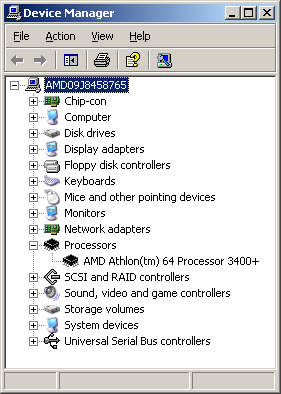Revving up in the New Year: AMD Athlon64 3400+ versus Intel P4 3.2 GHz
Conclusion: More Speed Is Good

A close look at all the benchmark results reveals that the new Athlon64 just barely earns the performance rating 3400+. Out of 32 benchmarks, only 13 were decided clearly in favor of AMD's new contender. If you were to evaluate each of the 41 individual disciplines, the result would be even poorer.
Two things should be considered here, however: for one, the big "64 bit" unknown remains a non-factor and for another, the benchmarks in which the Athlon64 shines are significant. In practically all of the gaming benchmarks, the 3400+ is able to beat its archrival Pentium 4 - sometimes soundly. X2, Warcraft III, Unreal Tournament 2003, Splinter Cell, Serious Sam, Gunmetal, Comanche and Aqua Mark: the Pentium 4 has to concede victory in all of them.
Meanwhile, thanks to its higher clock speeds, the Pentium 4 comes out on top for encoding tasks such as creating MPEG-4 and MPEG-2 video or MP3 audio as well as for data compression with WinRAR 3.2 - although sometimes only by a hair. It also dominates in the case of professional tasks with 3D Studio Max or Cinema 4D, while the Athlon64 outperforms the Pentium with Lightwave 7.5.
The results with just under 8% overclocking to 2,365 MHz indicate decent performance increases for many applications, mainly due to the integrated memory controller. That also goes to show that the 64 bit Athlon stands to gain a lot from increased clock speeds. For now, however, we're dubious that there'll be an Athlon64 with 2.4 GHz based on 130 nm; 90 nm seems more probable.
That leaves us with a clear description of the Athlon64 3400+: it's a top quality CPU that's especially suitable for games and that also lives up to its model name - albeit only in this category. At the end of the day, it still lags slightly behind the Pentium 4, a deficit that the 64 bit architecture could compensate for in the medium term, however. In the short term, Cool & Quiet could do the job, as Intel doesn't offer this type of energy management for desktop processors yet. We can only hope that the motherboard makers take note.
Stay on the Cutting Edge
Join the experts who read Tom's Hardware for the inside track on enthusiast PC tech news — and have for over 25 years. We'll send breaking news and in-depth reviews of CPUs, GPUs, AI, maker hardware and more straight to your inbox.
Current page: Conclusion: More Speed Is Good
Prev Page SiSoft Sandra Max 3Most Popular

